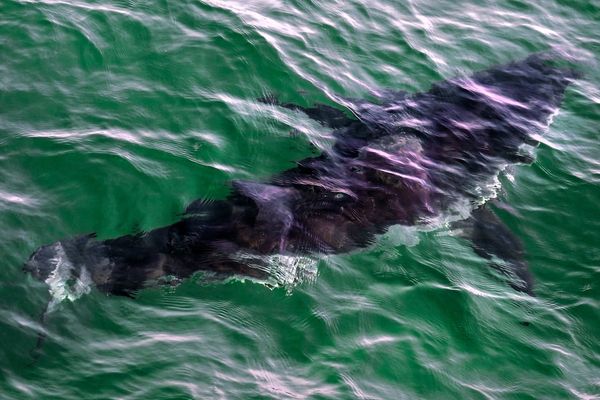
Testing by citizen scientists of a beck that feeds into Windermere has revealed a huge loss in invertebrate life in the lake in Cumbria that campaigners say is being caused by sewage discharges.
Save Windermere and WildFish carried out testing for invertebrates in Cunsey Beck, a site of special scientific interest (SSSI), in order to assess the impact on its freshwater ecology of the Near Sawrey wastewater treatment works, owned and operated by United Utilities.
Their first year results showed a decline of 76% in riverfly species and a 33% reduction in riverfly diversity in samples taken below the sewage outlet compared with samples taken above it.
They said the permit issued by the Environment Agency – outlining when raw sewage can be discharged legally from the treatment works and providing limits for toxic pollutants – is not fit for purpose. The Environment Agency denies this.
Save Windermere and WildFish say their findings suggest chronic damage to Cunsey Beck as a result of the regulatory failure of the EA. The stream was hit by a serious pollution event in 2022 that killed hundreds of fish, while Lake Windermere has become the focus of national concerns over sewage dumping and extensive algae.
Like all rivers in England Cunsey Beck is being affected by pollution from sewage – both raw and treated – and agricultural runoff. No river in England passes pollution tests for chemical and biological pollutants.

Cunsey Beck is categorised under the pollution tests in the EU-derived water framework directive as having a “poor” ecological status. But despite the plight of the stream, which feeds directly into Lake Windermere, the campaigners say the agency has not carried out any invertebrate sample testing in the river for 10 years.
“Time and time again the Environment Agency has demonstrated that they are not fit for purpose. Not only should they review this permit immediately, they should have never allowed it in the first place. They are failing to protect our natural world and this is particularly distressing within the Windermere catchment,” said Matt Staniek of the Save Windermere campaign.
Save Windermere is calling for urgent reform of the regulator and a public inquiry. In its analysis the campaign group along with Windrush Against Sewage Pollution, (Wasp), reviewed the EA permit for the Near Sawrey treatment works. The groups believe the permit is not adequate to protect the SSSI.
The limit for ammoniacal nitrogen, a toxic pollutant, for the works is 30mg a litre. The groups compared this with permits for Thames Water where only one site had a similar limit, while 222 other permits had limits of 18mg/l or lower. Staniek said the limit for discharging into an SSSI was inappropriate.
Sam Green, an ecologist from WildFish said: “The data from our SmartRivers monitoring shows freshwater invertebrates are being negatively impacted by water quality in the Windermere catchment, and this is particularly apparent downstream of United Utilities assets. Biodiverse invertebrate communities are a keystone of healthy freshwater ecosystems. We urgently need action to improve the ecological condition of these waterways.”

Revelations about the permit and the impact of pollution on the invertebrate population in the beck come after an internal report found there had been a series of failures by the EA in the way it investigated the serious pollution of the beck in 2022.
The independent report, obtained under freedom of information legislation by WildFish, found the EA failed to properly investigate the serious pollution in the summer of 2022. The report by the Scottish Environment Protection Agency said the failures meant no source of the pollution was identified. The EA said at the time that it recognised there were things it should have done better and that improvements were being made.
A United Utilities spokesperson said: “The Near Sawrey wastewater treatment plant operates in line with its environmental permit, as set by the Environment Agency.”
An EA spokesperson said: “These allegations are untrue. The United Utilities permit already considers the SSSI status of Cunsey Beck, with recent modelling showing our limits ensure a good ecological status for ammonia. We have carried out invertebrate sampling in Cunsey Beck as recently as June 2023.
“We are committed to further improving the water quality in Lake Windermere and are working closely with several organisations as part of the Love Windermere Partnership to do so. As part of this work, we have started the process of reviewing all the permits for this Lake to identify whether there is any further action we can take.”







